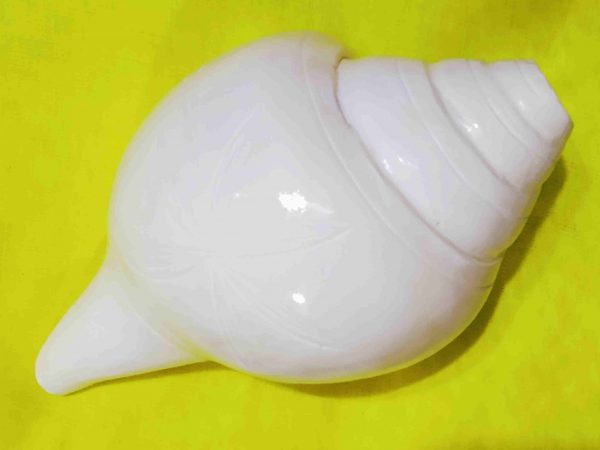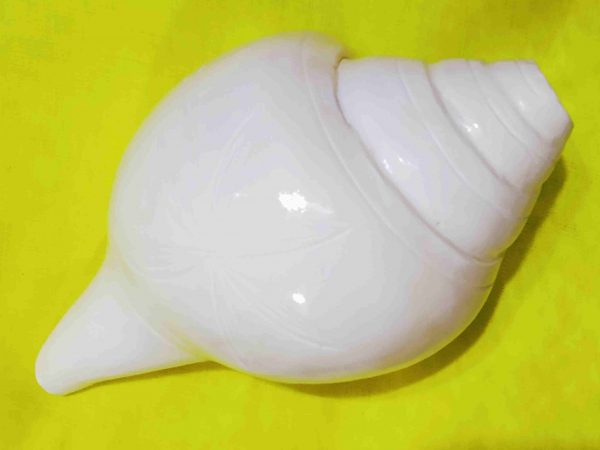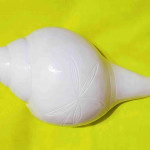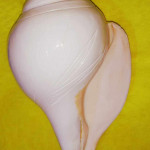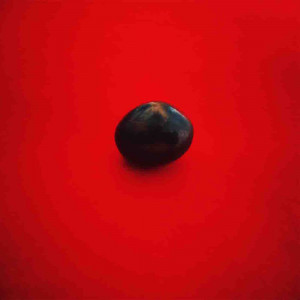Mantrit (Energized) Vamavarti Blowing Shankh (Conch) Rare & Original 19 cm Size – Big
₹4,200.00 inc.GST
- The special geometry of this kind of natural conch shell shankh creates a positive energy field.
- The blowing of a Vamavarti shankha is believed to remove the ill effects of negative energies and it purifies our surroundings and soul.
- The sound of the shankha symbolises the sacred OM sound.
- Description
- Additional information
Description
Product Origin : India
NOTE: All images shown are for illustration purpose only. Actual product may vary.
Vamavarti Blowing Shankh ( Conch ) white loud blowing shankh for pooja 19cm + Big
- It has smooth texture and blows loudly.
- The special geometry of this kind of natural conch shell shankh creates a positive energy field.
- The blowing of a Vamavarti shankha is believed to remove the ill effects of negative energies and it purifies our surroundings and soul.
- The sound of the shankha symbolises the sacred OM sound.
Vishnu holding the conch represents him as the god of sound. Brahma Vaivarta Purana declares that shankha is the residence of both Lakshmi and Vishnu, bathing by the waters led through a shankha is considered as like bathing with all holy waters at once.
Sankha Sadma Purana declares that bathing an image of Vishnu with cow milk is as virtuous as performing a million Yajnas (fire sacrifices), and bathing Vishnu with Ganges river water frees one from the cycle of births.
It further says “while the mere sight of the conch (shankha) dispels all sins as the Sun dispels the fog, why talk of its worship?” Padma Purana asserts the same effect of bathing Vishnu by Ganges water and milk and further adds doing so avoids evil, pouring water from a shankha on one’s own head before a Vishnu image is equivalent to bathing in the pious Ganges river.
In Buddhism the conch shell has been incorporated as one of the eight auspicious symbols, also called Ashtamangala .
The right-turning white conch shell ( Tibetan: དུང་གྱས་འཁྱིལ, Wylie : dung gyas ‘khyil), represents the elegant, deep, melodious, interpenetrating and pervasive sound of Buddhism, which awakens disciples from the deep slumber of ignorance and urges them to accomplish their own welfare and the welfare of others.
Shankha is one of the main attributes of Vishnu.
Vishnu’s images, either in sitting or standing posture, show him holding the shankha usually in his left upper hand, while Sudarshana Chakra (chakra – discus), Gada (mace) and Padma (lotus flower) decorate his upper right, the lower left and lower right hands, respectively.The shankha on the right is the icon for Vishnu at the Dattatreya temple, Bhaktapur Nepal.
Avatara’s of Vishnu like Matsya, Kurma, Varaha and Narsimha are also depicted holding the shankha, along with the other attributes of Vishnu. Krishna – avatar of Vishnu is described possessing a shankha called Panchajanya .
Regional Vishnu forms like Jagannath and Vithoba may be also pictured holding the shankha.
Besides Vishnu, other deities are also pictured holding the shankha. These include the sun god Surya , Indra – the king of heaven and god of rain the war god Kartikeya , the goddess Vaishnavi and the warrior goddess Durga . Similarly, Gaja Lakshmi statues show Lakshmi holding a shankha in the right hand and lotus on the other.
Sometimes, the shankha of Vishnu is personified as Ayudhapurusha “weapon-man” in the sculpture and depicted as a man standing beside Vishnu or his avatars.
This subordinate figure is called the Shankhapurusha who is depicted holding a shankha in both the hands. Temple pillars, walls, Gopuras (towers), basements and elsewhere in the temple, sculpted depictions of the shankha and chakra – the emblems of Vishnu – are seen. The city of Puri also known as Shakha- Kshetra is sometimes pictured as a shankha or conch in art with the Jagannath temple at its centre.
Shaligram are iconographic fossil stones particularly found in the Gandaki River in Nepal which are worshipped by Hindus as representative of Vishnu.
The shaligrama – which has the marks of a shanka, chakra, gada and padma arranged in this particular order – is worshipped as Keshava . Twenty-four orders of the four symbols defined for Shaligrama are also followed in worship of images of Vishnu with different names. Out of these, besides Keshava the four names of images worshipped starting with Shankha on the upper hand, are: Madhusudanah , Damodara , Balaram and Vamana.
- A Hindu legend in the Brahma Vaivarta Purana recalls the creation of conchs: Shiva flung a trident towards the asuras, burning them instantaneously.
- Their ashes flew in the sea creating conchs. Shankha is believed to be a brother of Lakshmi as both of them were born from the sea. A legend describes an asura named Shankhasura, who was killed by Vishnu’s fish Avatara , Matsya.
- A sadhu sounding the shankha.
- In the Hindu Epics of Ramayana and Mahabharata , the symbol of Shankha is widely adopted.
- In the Ramayana epic, Lakshmana , Bharata and Shatrugnha are considered as part-incarnations of Sheshnaga , Sudarshana Chakra and Shankha, respectively, while Rama, their eldest brother, is considered as one of the ten Avatars of of shri Vishnu.
During the great Mahabharata war, Krishna, as the charioteer of the Pandava prince and a protagonist of the epic – Arjuna – resounds the Panchajanya to declare war.
- Panchajanya in Sanskrit means ‘having control over the five classes of beings’.
- All five Pandava brothers are described having their own shankhas.
- Yudhisthira , Bhima, Arjuna, Nakula and Sahadeva are described to possess shankhas named Ananta-Vijaya, Poundra-Khadga, Devadatta, Sughosha and Mani-pushpaka, respectively.
- Because of the association of the shankha with water, nagas are often named after the shankha.
The list of Nāgas in the Mahabharata , the Harivamsha and the Bhagavat Purana includes names like Shankha, Mahashankha, Shankhapala and Shankachuda.
- The last two are also mentioned in the Buddhist Jataka Tales and the Jimutavahang.
- A legend states that while using Shankha as part of meditative ritual, a Sadhu blew his shankha in the forest of village Keoli and a snake crept out of it.
- The snake directed the sadhu that he should be worshipped as Nāga Devata (Serpent God) and since then it has been known as Shanku Naga.
- Similar legends are narrated at many other places in Kullu district in Himachal Pradesh.
- Shankha is a conch shell which is of ritual and religious importance in both Hinduism and Buddhism.
- In Hinduism, the shankha is a sacred emblem of the Hindu preserver god Vishnu.
- It is still used as a trumpet in Hindu ritual, and in the past was used as a war trumpet.
- The shankha is praised in Hindu scriptures as a giver of fame, longevity and prosperity, the cleanser of sin and the abode of Lakshmi, who is the goddess of wealth and consort of Vishnu.
- As a symbol of water, it is associated with female fertility and serpents.
- The shankha is one of the eight Buddhist auspicious symbols, the Ashtamangala, and in Buddhism it represents the pervasive sound of the Buddha dharma.
- In Tibetan Buddhism, it is known as “dung kar”.
A powder made from the shell material is used in Indian Ayurvedic medicine, primarily as a cure for stomach ailments and for increasing beauty and strength.
In the Western world, in the English language, the shell of this species is known as the “divine conch” or the “sacred chank”.
It may also be simply called a “chank” or conch. Vamavarta (“left-turned” as viewed with the aperture uppermost): This is the very commonly occurring dextral form of the species, where the shell coils or whorls expand in a clockwise spiral when viewed from the apex of the shell. In Hinduism, a Dakshinavarta shankha symbolizes infinite space and is associated with Vishnu.
- The Vamavarta shankha represents the reversal of the laws of nature and is linked with Shiva.
- The Shanka used in Vedic poojas is of the species Turbinella Pyrum dextral.
- This regularly available Shankha is called Vamavarti Shankha.
- It opens to the left and you can hold it with your right hand fingers inserted into the opening.
- That is when the head portion is at top and the opening is facing you, it opens to the right.
- It has smooth contours and 3 or more horizontal lines at the inside center opening as shown in the pictures.
Vamavarti Shankh shankha is the shell of a species of large predatory sea snail, which lives in the Indian Ocean. A powder made from the shell material is used for increasing beauty and strength.
Additional information
| Weight | 0.816 kg |
|---|---|
| Dimensions | 19 × 11 × 9 cm |

